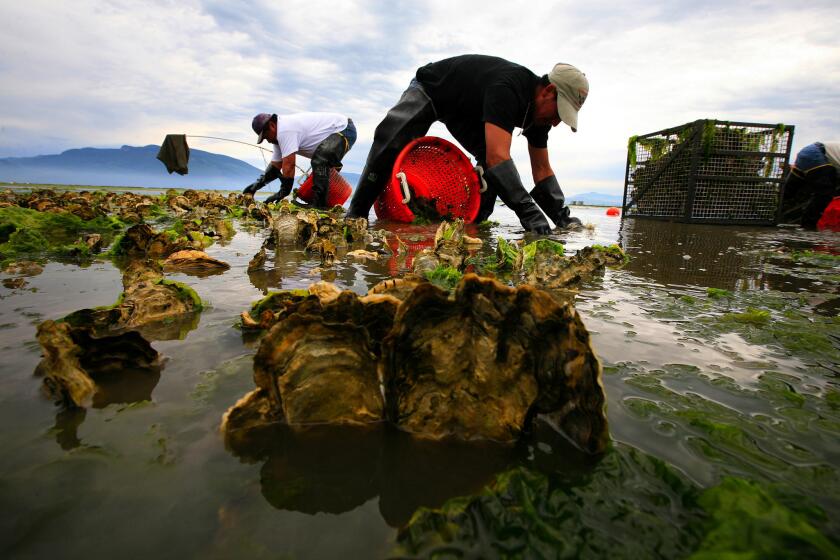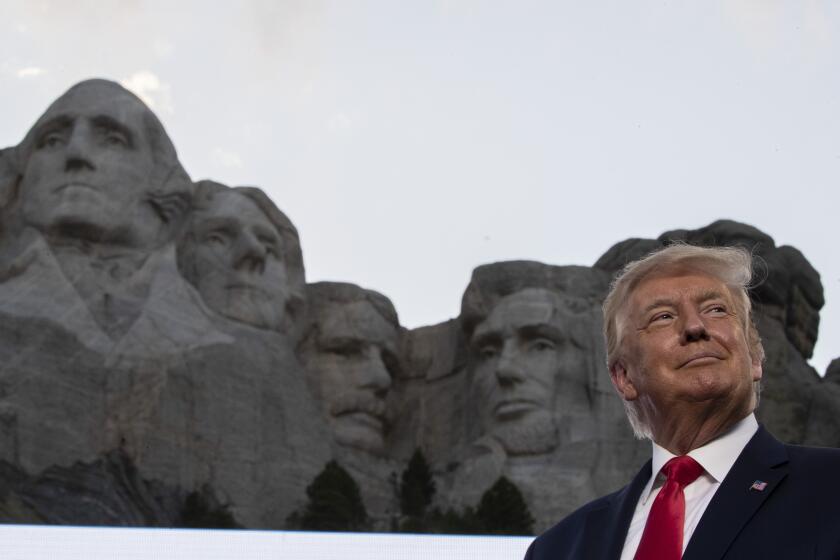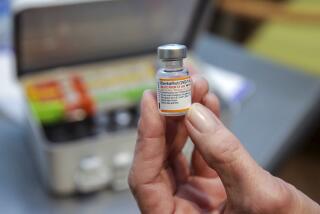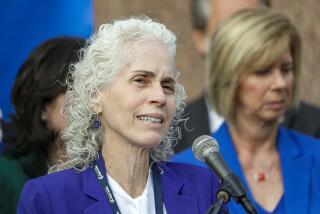Editorial: We still don’t know enough about what’s causing COVID-19 to surge
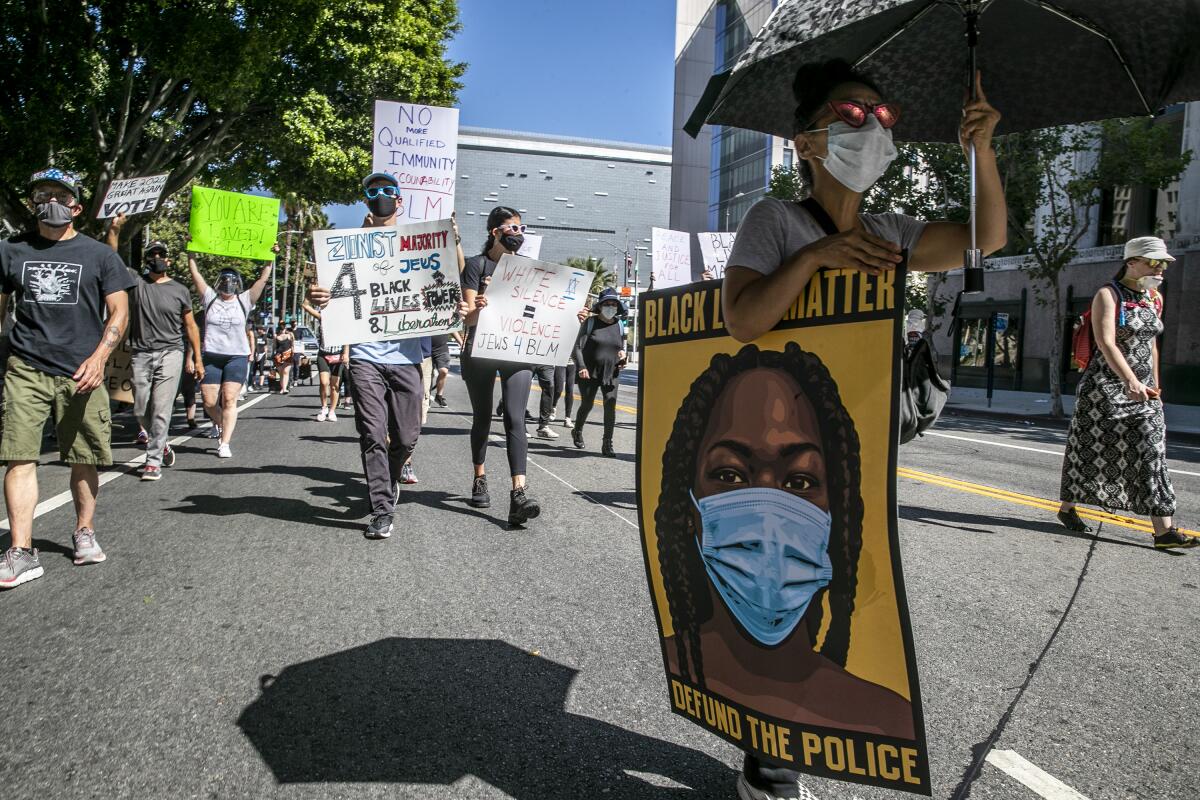
When demonstrators took to the streets to protest the death of George Floyd under the knee of a Minneapolis police officer, the cause was just but the worry was real: Were the marches going to lead to massive new outbreaks of coronavirus just as most of the nation had flattened the curve?
At the same time, newly reopened bars, restaurants and stores drew customers — sometimes masked, often not — while crowds returned to beaches. Released from sheltering in place, people held gatherings at their homes, trusting that the folks they invited would be careful not to expose everyone around them to danger.
Now, cases are surging in Texas, Florida, Arizona, Nevada, West Virginia, Tennessee and Montana; average case counts hit new highs Sunday in a dozen states, California included. For 27 straight days, the count for the country as a whole has climbed relentlessly higher.
So who’s to blame for the frightening increase in infections? Because the new coronavirus is, well, new, there’s still a lot we don’t know about what makes a situation safe instead of a potential COVID-19 hot spot. But tentative answers are coming in now, sometimes at great human cost.
The protests don’t seem to have caused any major health problems, even though the participants often were in close proximity and were frequently yelling, which increases the exhalation of droplets. Demonstrators in Boston were no more likely to test positive afterward than the city’s population as a whole. The rates of positive tests were similarly low among demonstrators in Minneapolis and Seattle. A national study by the National Bureau of Economic Research found that overall, coronavirus rates were no higher in counties that were the sites of large protests than those that saw no demonstrations.
Plastic might be saving our lives from coronavirus now, only to endanger us in the future as it pervades our food and the very air we breathe.
These findings are far from definitive, however. In Los Angeles, demonstrators had trouble getting testing appointments, which could mean that some cases are unknown and uncounted; in New York City, city officials instructed contact tracers not to ask people who tested positive whether they had attended protests, as though ignorance was going to make people safer.
Massive gatherings still aren’t a good idea — some protesters did in fact become infected — but there’s no indication so far that the protests were super-spreader events. Being outdoors almost certainly helped.
Instead, the most common sources of recent COVID-19 surges have been some of the smallest venues, especially bars. People there are socializing indoors, often in close proximity, talking loudly to be heard over the chatter, alcohol loosening their sense of caution, their masks coming off as they drink or not worn at all. A single Michigan bar has set the stage for more than 150 COVID-19 cases so far.
The long-awaited reopening of indoor restaurants also appears to be a contributor. A J.P. Morgan study found that increases in on-site restaurant spending — not takeout — strongly predicted rising COVID-19 rates over the three weeks that followed.
Private get-togethers are repeatedly cited by health officials as problematic. Contact tracing in Sacramento found that the biggest sources of recent spread there were graduation parties, funeral gatherings and the like. Caution falls away when we’re with people who are known, loved and trusted.
A 51-year-old Lake Elsinore trucker, Tommy Macias, died June 21 after attending a barbecue where no one wore masks; he apparently caught it from another attendee who was infected but asymptomatic.
It would be premature to draw too many lessons from the limited data we have at this point. Still, the lectures given by public health officials appear to have been borne out in key ways. Outdoors is clearly less risky than indoors. Social distancing is needed, as are masks, masks, masks. COVID-19 is apolitical and without judgment; it neither rewards protesters nor punishes people who want a drink and some company. It just follows the laws of science.
When the president says he’s defending “our heritage,” it’s understandable that some people would hear code words for “dead traitors.”
Those are laws we have to understand much better if reopening — and re-reopening — are to work. People need to know which outings and activities minimize risk while providing a semblance of normal life. Most local beaches were closed for the July 4 weekend, but were those beaches, even if crowded, more dangerous than the block parties or backyard barbecues that replaced them? Is a beach significantly more dangerous if it’s crowded? And is that more or less risky than a visit to a salon or a workout at the gym? Do trendy, open office spaces need to return to high-walled cubicles? People are guessing, and guesswork doesn’t make for good public health policy.
That’s where contact tracing comes in. The goal of tracing is to reduce the spread of disease by finding and contacting people who may have been exposed so they can be tested. But it also can provide a mountain of data about the relative safety of different activities and environments, just as it did with the private celebrations in Sacramento. Some tracing exists, but as with many of the nation’s efforts, it is not nearly robust enough. That would take concerted support in terms of money and policy at the federal level, which so far has been missing.
The task is monumental and costly. But gaining a better understanding of how the virus is spreading is key to learning how to live with COVID-19 until the disease is tamed.
More to Read
A cure for the common opinion
Get thought-provoking perspectives with our weekly newsletter.
You may occasionally receive promotional content from the Los Angeles Times.
